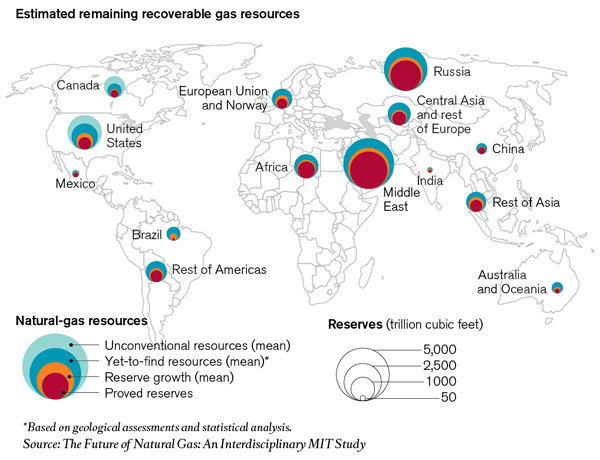Sustainable Energy
Tapping an Unconventional Source



In recent years it has become clear that the United States and Canada hold a bonanza in recoverable natural gas, a resource once thought to be declining. Because natural gas releases just half as much carbon dioxide as coal when it’s burned to produce a comparable amount of electricity, the fuel could play an important role in reducing carbon emissions.
In the United States, for example, 45 percent of electricity comes from coal and 23 percent from natural gas. If half the electricity from coal were replaced with electricity from natural gas, it would eliminate 20 percent of the U.S. carbon dioxide emissions attributable to electricity generation.
Much of the optimism stems from the discovery that natural gas can be extracted economically from vast deposits of shale found across the United States (see “Natural Gas Changes the Energy Map,” November/December 2009). At current rates of consumption, those resources alone could meet U.S. demand for decades. Known worldwide supplies of natural gas add up to 150 times annual global consumption, and this estimate doesn’t include unconventional sources outside North America.